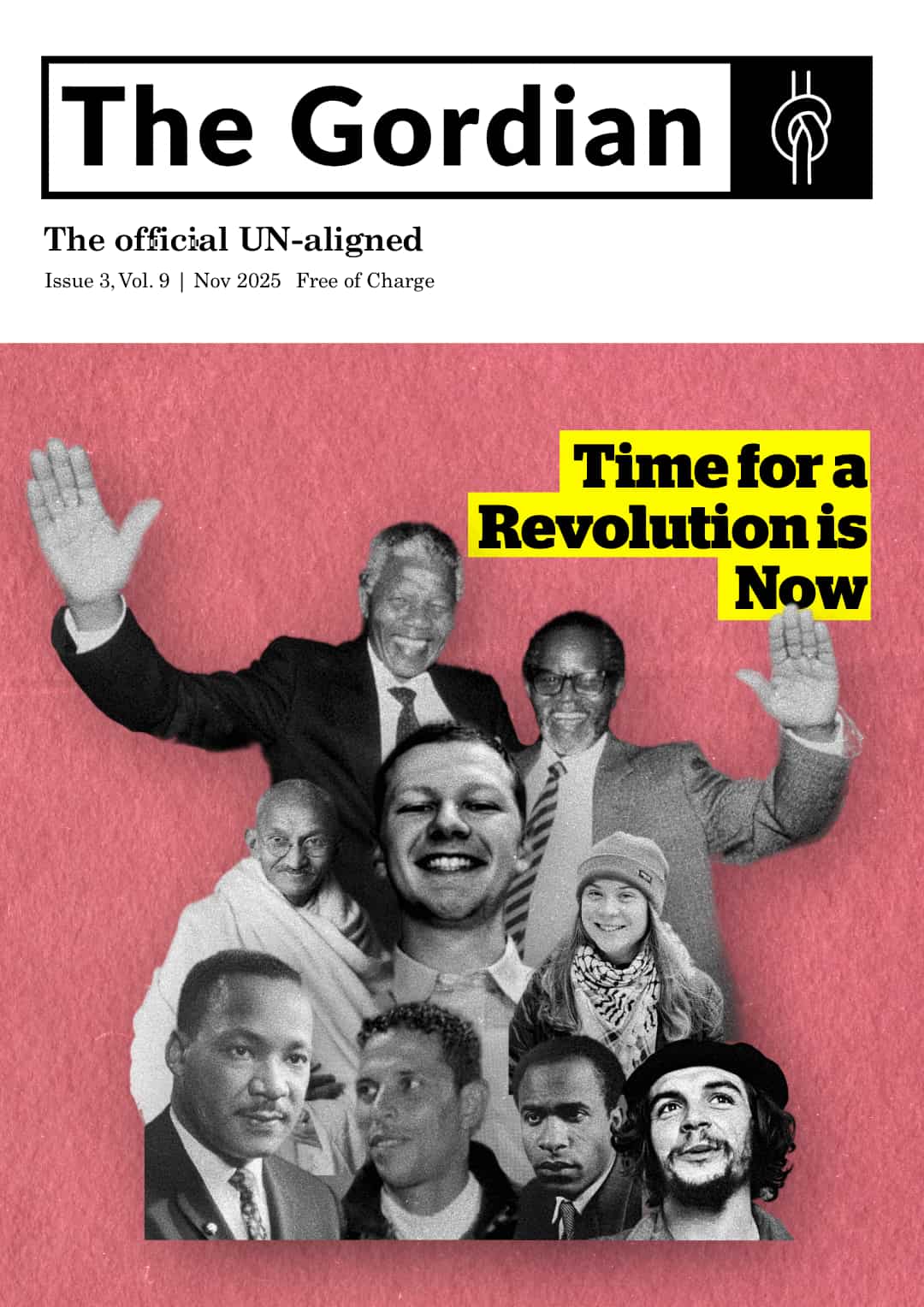The Global Constitution: The New Social Contract
The dream of a united global constitution is closer than we think. As nationalism rises, can a unified code be the anchor we need? Dive into our October issue titled 'Global Constitution: The New Social Contract'. Join us as we navigate through the intricacies of geopolitics, art, culture, and more. This issue boasts thought-provoking pieces by Alexander Stoney, Adrian Liberto, Sunil Kumar Pariyar, Samira Ghafori, Anahita Ahmadi, Dawn Roy, Omar Alansari-Kreger, Carla Pietrobattista and Partho Pratim Chatterjee. The editors are Ariana Yekrangi and Adrian Liberto.
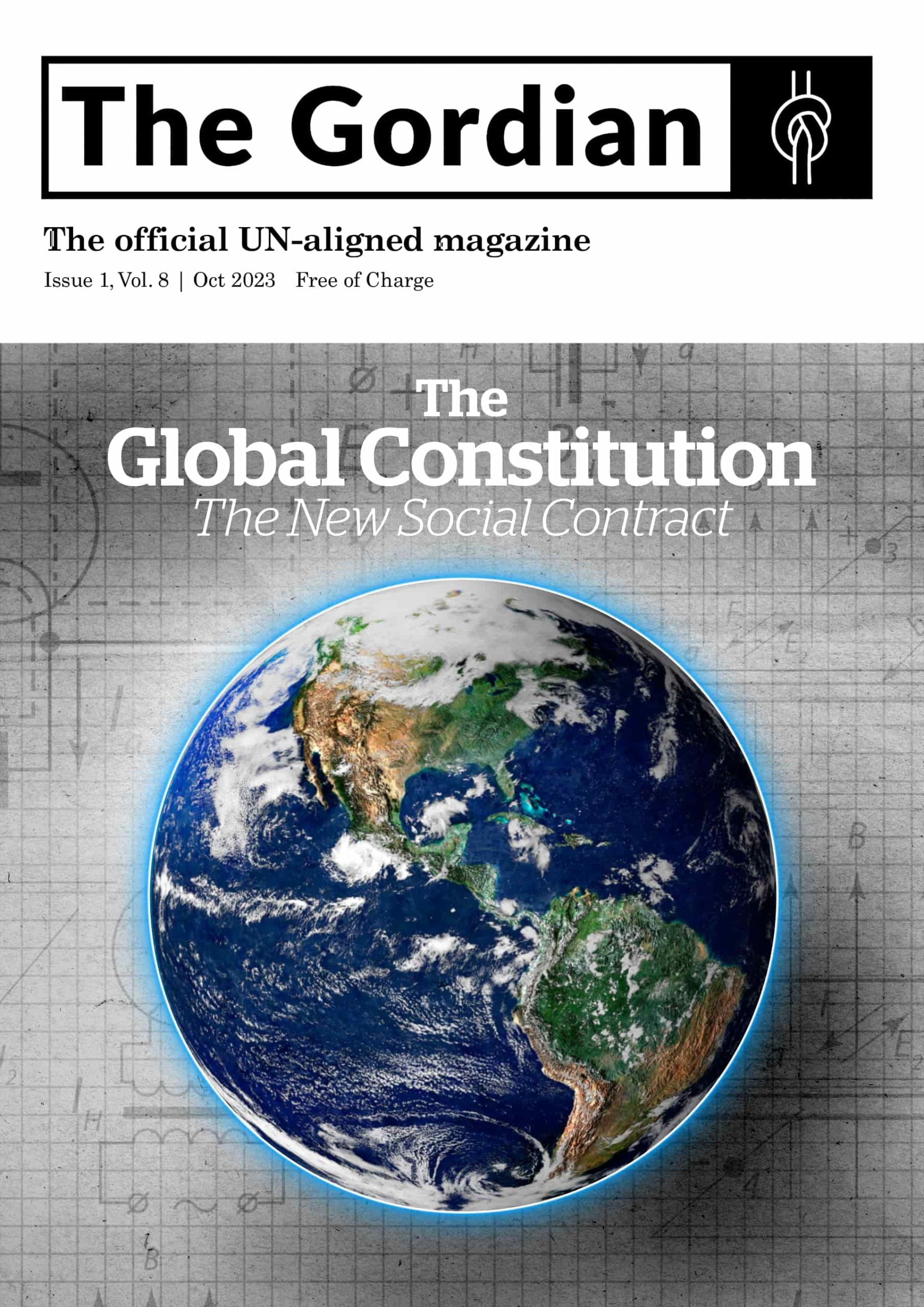
Letter from the editors
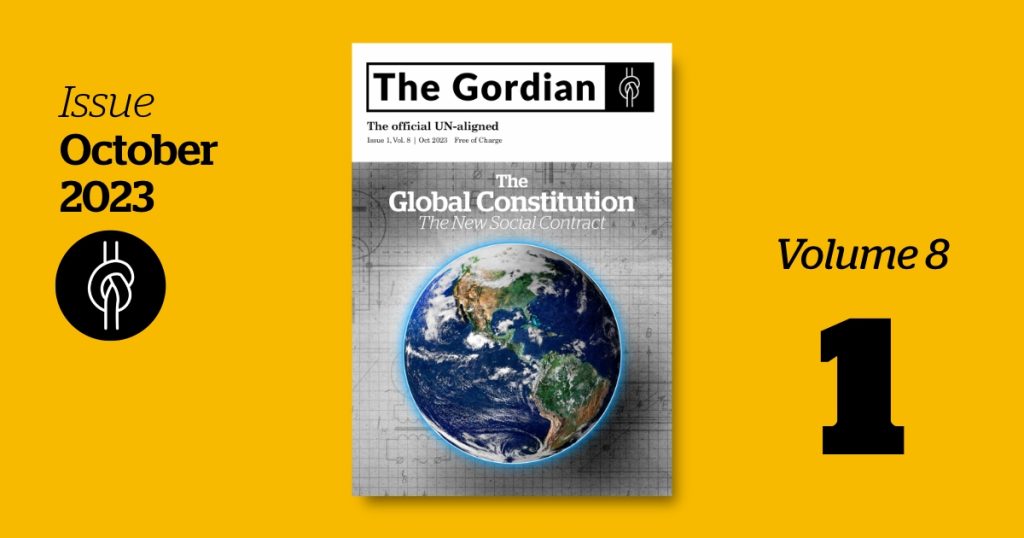
Photo by the UN-aligned design team.
As October’s chill sets in, ‘The Gordian’ returns from its brief hiatus with a meticulously curated issue titled ‘Global Constitution: The New Social Contract.’ This edition seeks to weave together the intricate threads of geopolitics, art, culture, and science, presenting a cohesive narrative of our shared global destiny.
In ‘The Imagined Unity: Understanding Nations, Nationalism and Their Bedrock,’ Alexander Stoney offers a profound exploration of the nuanced concept of ‘Nation’. This sets the stage for Adrian Liberto’s discourse on the pressing need for a global constitution in ‘The Global Constitution: And Why we Need it.’ Liberto subsequently scrutinises the UN’s role in the Palestinian crisis in ‘Palestine and the UN: Will this 794th letter jolt the Security Council into action?’
Stoney returns with ‘24 Years of Missed Opportunities: How the UN Failed to Secure Peace in the DRC,’ presenting a critique of the UN’s endeavours in the Democratic Republic of Congo. Sunil Kumar Pariyar, in a conversation with Stoney, brings forth the struggles and aspirations of the Dalit community in Nepal in ‘Redefining Forest Boundaries.’
Ariana Yekrangi offers a deep dive into Iran’s pottery landscape, with ‘Sculpting Change: Two Women Reshaping Iran’s Pottery Scene,’ highlighting the stories of Samira Ghafori and Anahita Ahmadi. Yekrangi’s commentaries on Armenia’s diplomatic shifts in ‘Armenia’s ICC Pivot: Defying Russia and Eyeing European and Iranian Ties’ and the Tories’ selective criticism in ‘The Selective Outrage of the Tories: HS2 and Beyond’ provide readers with a pulse on the shifting sands of geopolitics.
Dawn Roy delves into the broader ramifications of Uganda’s Anti-Homosexuality Act, while Omar Alansari-Kreger posits questions on the efficacy of nuclear deterrence in today’s geopolitical climate.
Carla Pietrobattista’s artistic critique, ‘Transcending Strokes,’ and the visual gallery, ‘Iranian Women Transforming Contemporary Pottery – In Pictures,’ offer readers an immersion into the world of art.
Lastly, Partho Pratim Chatterjee introduces pragmatic solutions to tackle global warming in ‘4 Ways to Use Carbon Dioxide to Curb Global Warming.’
We invite you to embark on this journey with us. As always, your engagement and feedback will serve as the beacon that guides our endeavour.
‘The Imagined Unity’: Understanding Nations, Nationalism and Their Bedrock
By Alexander Stoney

The image featured was generated by OpenAI’s DALL·E, prompted by the UN-aligned design team.
How do the multifaceted processes of nation building shape our understanding and implications for the future of the United Nations?
Few terms in political science hold as complex a definition as “Nation”. As UN-aligned launches its new volume of The Gordian, exploring Nation Building, it becomes crucial to establish a clear understanding of the term and its multilayered complexities.
What is a nation?
A nation is defined as “a group of people who share a history, traditions, culture and, often, language – even if the group does not have a country of its own”, writes National Geographic.
This definition crucially highlights that a nation does not mandate all its citizens to reside within the same territory. Over the last half century, ‘nation’ has become a synonym for a state – a defined territory with hard borders. However, buried within the definition of nation is a clash between the concrete and the abstract.
While a nation contains tangible and concrete markers of identity such as history and language, it also contains fluid and intangible markers such as culture and tradition. This complexity of definition is further complicated by the absence of clear borders to help confine and align such abstract aspects of identity with a specific geographical territory.
In many ways, the term ‘nation’, highlights human nature’s need for belonging and identity. While this concept frequently intertwines with the state, resulting in the term ’nation-state’, it is not solely confined to it.
In his 1983 book, political scientist Benedict Andersen, described nations as “imagined communities”. He argues that nations are “imagined because the members of even the smallest nation will never know most of their fellow-members, meet them, or even hear of them. Yet, in the minds of each lives the image of their communion”.
What is nationalism?
This, of course, leads to the need for a separate definition of nationalism. Drawing from Anderson’s work, if we accept that nations are imagined communities, nationalism therefore explains why and how these imagined communities are created.
As per Webster’s Dictionary, nationalism is defined as “a sense of national consciousness exalting one nation above all others and placing primary emphasis on promotion of its culture and interests”. This dynamic force, as history has shown, can stir nations and shape their futures.
In the last century, however, nationalism has developed a negative connotation, often associated with far-right political movements and major global conflict.
Nevertheless, some contend that without the motivational force of nationalism, specifically national competition, many technological advances, exploration and social progress would have not been possible.
While both views present compelling evidence, we offer an alternative perspective in this new volume. Rather than viewing nationalism as a force for good or bad, we propose perceiving it in a neutral light as a powerful emotion capable of captivating an entire group of people, and ultimately, a key factor in nation building.
How is a nation built?
With these two definitions firmly established, we can now turn our focus to Nation Building. While the terms nations and nationalism have taken centre stage in the past century, UN-aligned predict that the mechanisms by which nations are formed will be instrumental in moulding the next century and a better United Nations.
Nation building is both a simple and deeply complex process. Fundamentally, nation building means creating a sense of unity, belonging and national identity amongst a group of diverse people. Essentially, it is about the many becoming one nation. However, this definition does not begin to cover the myriad of challenges that comes with this process.
Nation building stirs debates of language, histories, conflict, cultures and religion. It raises profound questions over state borders and territories, constitutional dispensation and governments. In addition, it requires a formulation of a shared identity and of shared values agreed upon internally, and externally displayed through international relations.
Examples of nation building can be found on every continent. Canada, since its birth in 1867, has been in a perpetual state of nation building, aiming to build a national identity separate from its British and French colonial past and the looming shadow of the USA.
Simultaneously, Canada has been forced to look at its internal identity and the relationships between indigenous peoples and colonial descendants. For this reason, Canada’s version of nation building has been a process of accepting and celebrating its diversity, creating a national “mosaic” of identity.
In post-apartheid South Africa, on the other hand, the process of nation building has been one of unification, reconciliation and equality. Throughout South Africa’s post-apartheid history, the ANC-led government has undertaken a distinct nation-building programme in pursuit of “a truly united, democratic and prosperous South Africa”.
Similar to Canada, the South African government introduced the “rainbow nation” concept, focusing on what Andrew Stinson, refers to as “interculturalism”. This process is one that focuses on recognising commonalities while reducing tensions and promoting the formation of social partnerships amongst different cultural groups.
From these two examples, it is clear that nation building is far from a universal, one-size-fits-all process. Instead, it requires careful tailoring to a country’s history, culture, national values, language and religion. Despite both being former British colonies, the nation building process of Canada and South Africa have been remarkably different, facing different distinct challenges.
These divergent patterns undoubtedly remain true when examining other countries, ranging from the rise of China to the creation of a new country in South Sudan. If nation building varies so greatly worldwide, is there any common ground? Can there be a universal definition of nation building?
The answer lies in the objective of nation building. Harris Mylonas, professor of political science at George Washington University, asserts that nation building aims to unify the people within the state to ensure long-term political stability and viability.
Ultimately, nation building is a process defined by its outcomes. The effectiveness of nation building could be judged by whether it fosters a healthier sense of national identity and whether it garners internal and external recognition, sovereignty and credibility.
The desire to unify a people, bolster stability and power, and work towards the future prosperity of a country is a common thread binding diverse nations like South Africa, Canada, China and South Sudan. It is the inherent desire for improvement that drives the process of nation building.
What does it mean to be part of a nation?
With this foundation, we set the stage for the next few issues of The Gordian, where we aim to delve into this and many related essential questions. Our focus will be on examining the trends, challenges and opportunities of nation building, alongside the people, movements and leaders who are relentlessly propelling it forward.
And as you read, we urge you to consider what it means to be part of a nation. Consider your own individual place, your people’s place and your region’s place in the nation building process.
Think of what nation building means for international organisations such as the United Nations. And finally, consider your own country and what changes you would like to see through the process of nation building.
It is not just about understanding, it is about igniting the first flame for a truly cohesive and effective United Nations.
The Global Constitution: And Why we Need it
By Adrian Liberto
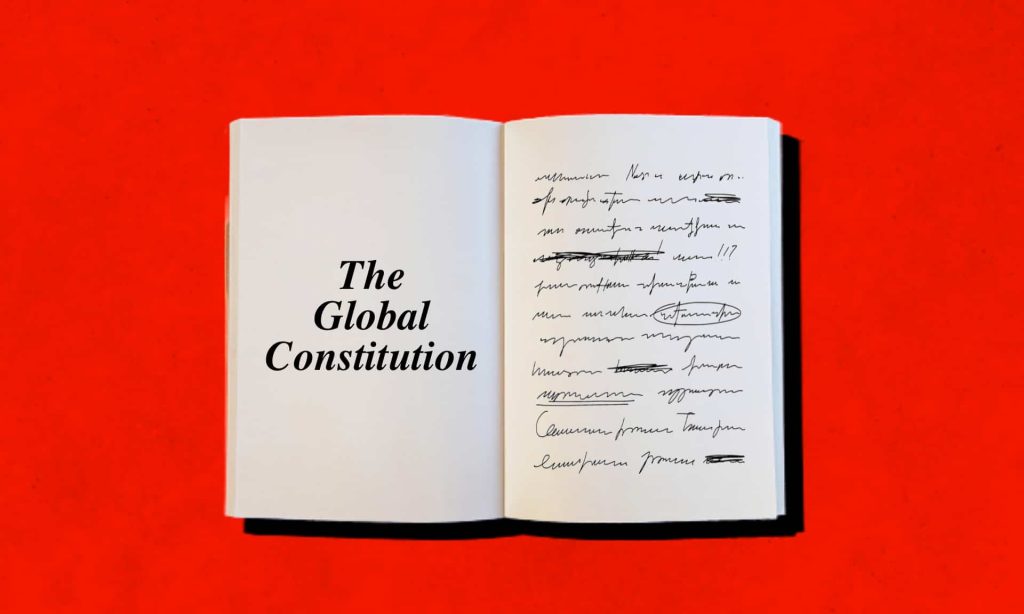
Photo by the UN-aligned design team.
In a world beset by rising nationalism and a chronic disregard for global responsibility, could a world constitution steer us towards peace and prosperity?
Palestine and the UN: Will this 794th letter jolt the Security Council into action?
By Adrian Liberto
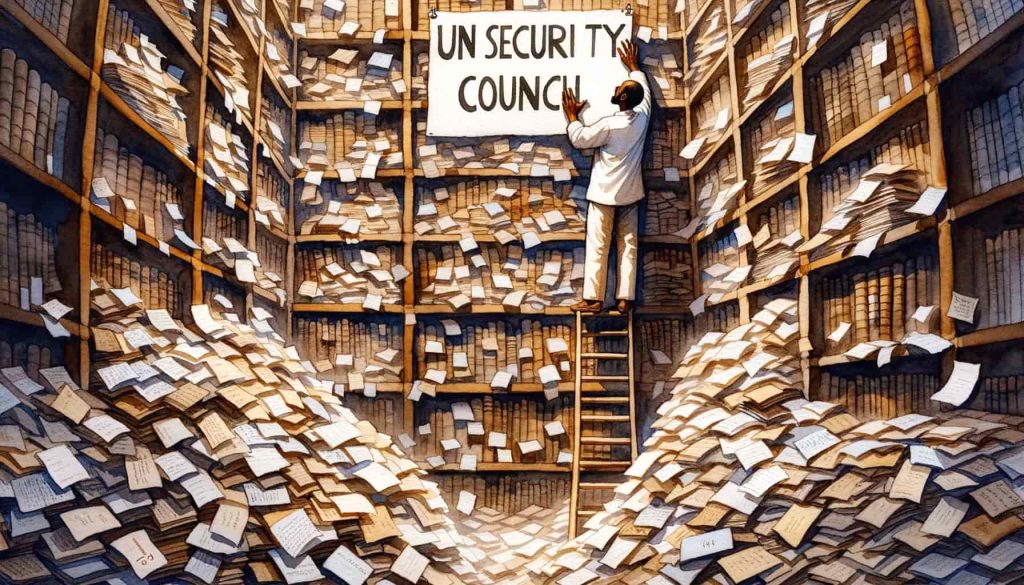
The image featured was generated by OpenAI’s DALL·E, prompted by the UN-aligned design team.
In his 794th plea to the UN, Riyad H. Mansour exposes the unchecked horrors in Palestine, but can the UN overcome its inertia and respond, or will inaction deepen the global human tragedy?
On June 22, 2023, Riyad H. Mansour, the Palestinian-American diplomat who has been the Permanent Observer of Palestine to the United Nations since 2005, wrote a letter, his 794th, to the United Nations.
It was triggered by the recent atrocities in Jenin. The letter, addressed to the Secretary-General, the President of the General Assembly and the President of the Security Council, highlighted the crimes committed by Israel against the Palestinian people.
In it, he called for the international community’s “immediate attention” to the “alarming aggression” and “war crimes” which Israel continues to perpetrate with impunity. After having described the terror tactics, the murder of civilians, including children, and the illegal annexations, Mansour cautioned.
“We warn about the rising threats in this regard, which are actually being pushed and boasted about openly by Israeli officials, including by far-right Minister, Bezalel Smotrich, who is on record denying the Palestinian people’s existence and who has publicly calledlee for air and tank forces to launch attacks on Palestinian cities and for lethal force to be used against defenceless civilians under military occupation, including his call for the village of Huwwarra to be ‘wiped out’.”
“It is not coincidental that the Israeli Government has given Smotrich control over the criminal campaign of planning, construction and expansion of Israel’s colonial settlements in the Occupied Palestinian Territory, including East Jerusalem.”
Will this 794th letter, jolt the Security Council or the General Assembly into action? Will Israel’s atrocities provoke the same outrage and response that Russia’s aggression of Ukraine has? Of course not.
There will be no sanctions, no ongoing press coverage, no arming of Palestinian resistance fighters, no special criminal courts… no justice. The main reason for this is the unwavering support for Israel, including financial and military, from the United States, a permanent UN Security Council member.
However, the US is not alone in supporting, condoning or turning a blind eye to these abuses, as most of its allies follow suit, as does much of the mainstream Western media.
On June 20, for instance, the US led a 27-country block condemning a UN investigation into alleged human rights violations by Israeli. The countries, which included Canada, the UK, Austria and Italy, demanded an end to the “long-standing disproportionate attention given to Israel in the council.”
So, while the UN expresses “deep concern” and tries to ascertain obvious facts, it is powerless. And so, the world watches on, as humanity sinks deeper into inhumanity.
24 Years of Missed Opportunities: How the UN Failed to Secure Peace in the DRC
By Alexander Stoney
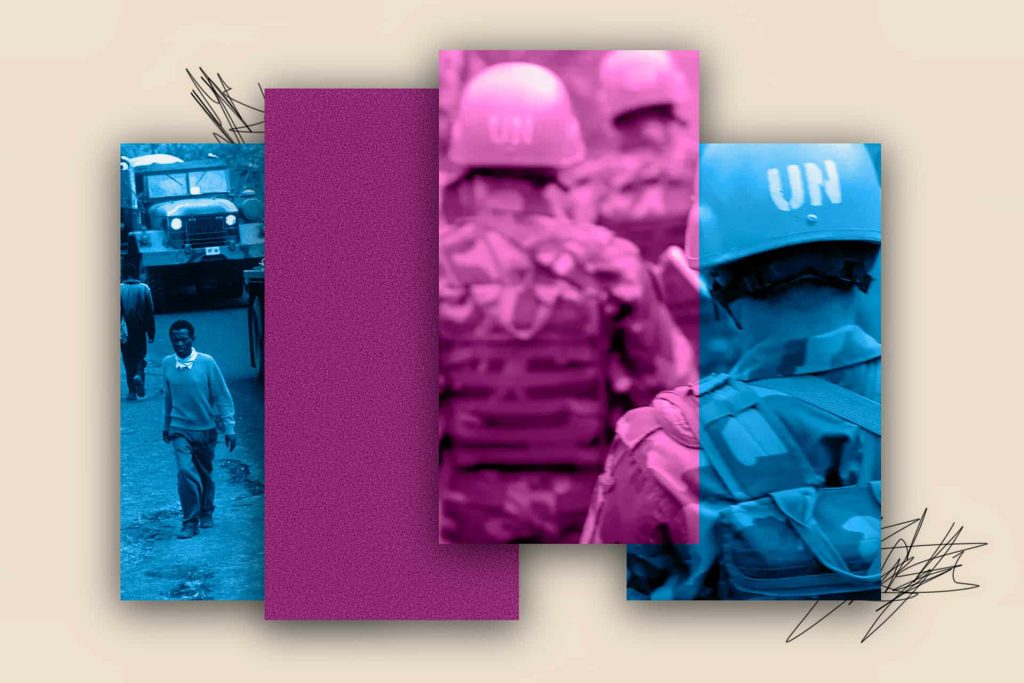
Graphic: Ariana Yekrangi
As the UN’s longest-standing peacekeeping mission faces a turbulent exit from the Democratic Republic of Congo, what were its critical failings, and what can the UN learn from them?
Redefining Forest Boundaries: Sunil Pariyar on the Dalit Struggle and DANAR’s Impact in Nepal
As told to Alexander Stoney
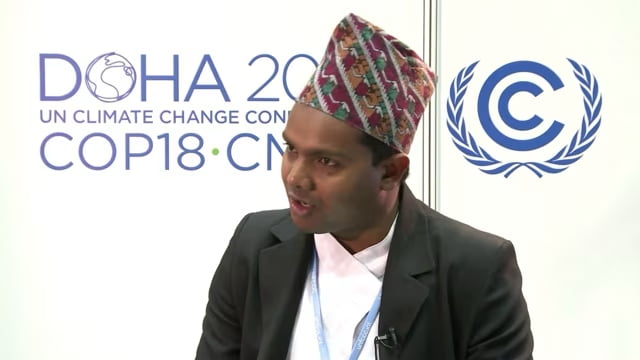
Sunil Kumar Pariyar, DANAR Nepal. Photo: Climate Change Home/YouTube
Sunil Kumar Pariyar talks about DANAR and the struggles and triumphs of the Dalit community as they strive to reclaim their rightful place in Nepal’s natural resource management.
Sculpting Change: Two Women Reshaping Iran’s Pottery Scene
As told to Ariana Yekrangi

Graphic by the UN-aligned design team.
Emerging from the vibrant tapestry of Iranian culture, Samira Ghafori and Anahita Ahmadi shape clay into powerful narratives of resilience and personal evolution.
Armenia’s ICC Pivot: Defying Russia and Eyeing European and Iranian Ties
By Ariana Yekrangi
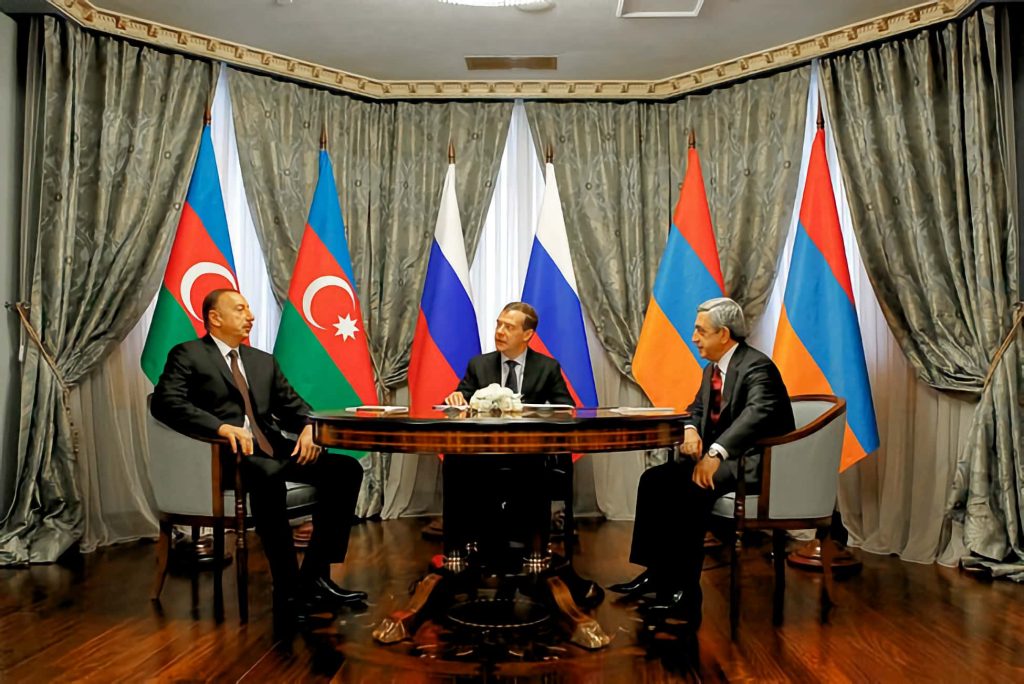
Azerbaijani President Ilham Aliyev, Russian President Dmitry Medvedev and Armenian President Serzh Sargsyan Convene in 2012. Photo: Kremlin.ru © CC BY 4.0
Armenia’s move towards the International Criminal Court sets the stage for a diplomatic drama with Russia, while opening a new chapter of engagement with the West and Iran.
In an unprecedented development, Armenian lawmakers have ratified the Rome Statute, thereby signifying the nation’s intent to join the International Criminal Court (ICC).
This development has sent ripples all the way to the Kremlin, which seems less than pleased. Given the earlier move by the ICC to issue an arrest warrant for Russian President Vladimir Putin in March, Armenia now finds itself on a tightrope, precariously balancing its long-standing alliance with Russia. This recent gesture by Armenia has not only added a strain to its delicate camaraderie with Russia but also hints at a cautious pivot towards the West for a security umbrella.
https://un-aligned.org/global-issues/the-icj-the-icc-whose-justice/
The shift gains significance in light of the recent mass exodus of more than 80% of the ethnic Armenian population from the disputed territory of Nagorno-Karabakh, following its takeover by Azerbaijan. Armenian authorities have minced no words, labelling this mass departure as a form of ’ethnic cleansing,’ a claim robustly rebutted by Azerbaijan.
Where is Nagorno-Karabakh?
Nagorno-Karabakh, cradled at the eastern edge of the Armenian Highlands and officially under Azerbaijan’s banner, has transformed into a cauldron of conflict between Armenia and Azerbaijan, stirred by a historical and political ladle.
Initially carved out as an autonomous enclave for ethnic Armenians by Stalin to consolidate Soviet allegiance, its parliament later swayed towards Armenia as Soviet clout ebbed. This shift triggered a violent discord, leaving in its wake a trail of casualties.
Despite a political tether to Armenia, the global stage recognises Nagorno-Karabakh as Azeri territory, fuelling the flames of disagreement further between the two nations.
European dimensions
On the wider European and global stage, France has warmly welcomed Armenia’s decision, while the European Union appears to sit on the fence. The EU’s recent pact to ramp up its import of Azerbaijani gas by 2027, in an attempt to loosen its dependency on Russian energy, might tie its hands from extending unequivocal support.
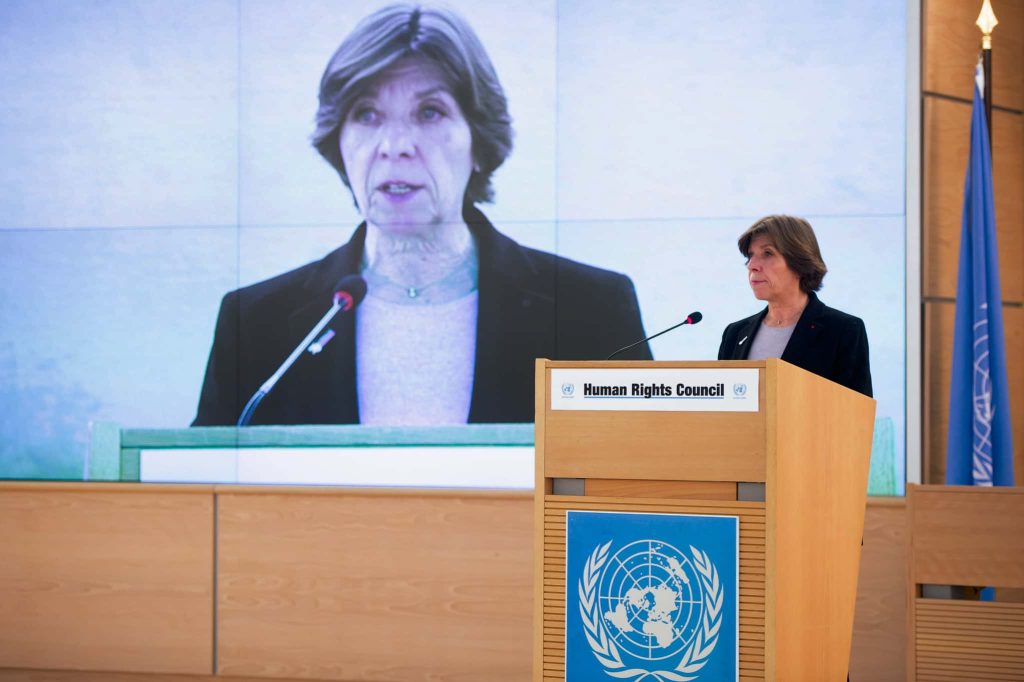
French Foreign Minister Catherine Colonna. France pledged to provide military support to Armenia in the light of recent events in Nagorno-Karabakh. Photo: UN Geneva/Fllickr
However, the tragic history of Nagorno-Karabakh and its echoes in Europe’s dark past have led some to suggest that the EU should consider offering membership to Armenia as a potential remedy.
The European Commission’s President, Ursula von der Leyen, has cast a spotlight on the urgent need for the EU to pivot towards the radical modifications necessary for the accession of Ukraine and other nations into the bloc’s fold.
This call to action emerges as internal computations within the European domain disclose that the enlargement of the EU to encompass nine new countries, Ukraine included, would demand a substantial financial outlay from existing members, to the tune of over €256bn.
The Iranian Equation
Iran surfaces as another key regional actor, both contested and desired by Armenia and Azerbaijan. Iran, grappling with its own domestic hurdles with a large ethnic Azeri populace, finds itself in a prudent balancing act between Yerevan and Baku. Recent diplomatic exchanges between Armenia and Iran demonstrate active engagement amidst the transforming geopolitical milieu.
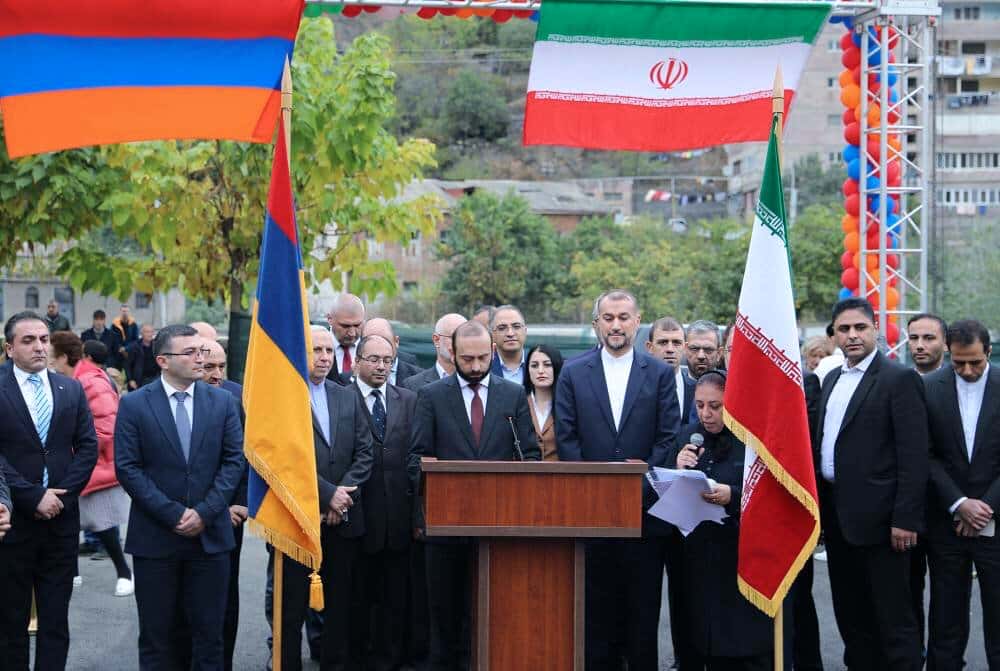
Iranian Foreign Minister Hossein Amir Abdollahian Opens New Consulate General in Kapan During Significant Armenia Visit
The diplomatic dalliance between Armenia and Iran has been strengthened by a meeting on 2 October 2023, between Iran’s Foreign Minister and Armenia’s top security official. Both countries have opposed the Zangezur Corridor in the Caucasus, aimed to be a short land route between the Pacific and Atlantic oceans, and a juncture for North-South and East-West routes, seeing it as a threat to Armenia’s sovereignty and territorial integrity.
Further cementing these burgeoning ties, the opening of a new Iranian consulate in Gyumri, Armenia, along with the arrival of a new ambassador, signals a strengthening diplomatic bond aimed at nurturing cooperation amidst the swirling geopolitical currents.
Diplomatic complexities with Azerbaijan
Azerbaijan’s recent decision to snub EU-hosted talks on Nagorno-Karabakh adds another layer of complexity to Armenia’s international alliances. This move comes after France’s decision to supply Armenia with military equipment, which has led Azerbaijan to avoid any diplomatic format involving France.
While Armenia’s recent move signifies its intent to embrace international frameworks, experts argue that a return to diplomacy is critical for all parties involved. The situation also raises questions on the limits and prospects of Armenia’s international alliances and whether it can manoeuvre itself adeptly in a changing geopolitical landscape.
Armenia and Azerbaijan have been embroiled in a contention over the hilly territory since the concluding days of the Soviet era, with tensions escalating to war on two occasions: once in the 1990s and again in 2020.
The Selective Outrage of the Tories: HS2 and Beyond
By Ariana Yekrangi
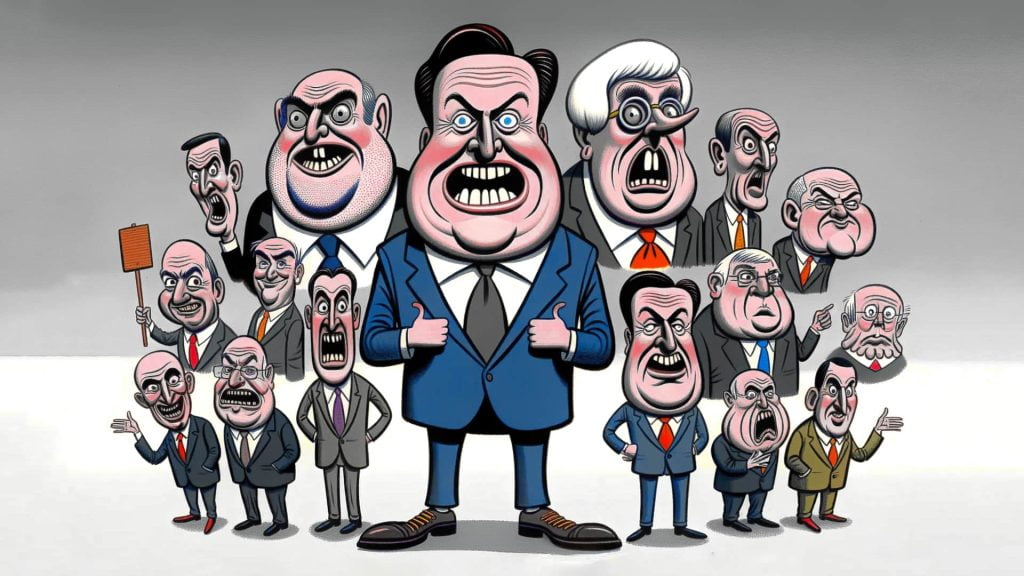
The image featured was generated by OpenAI’s DALL·E, prompted by the UN-aligned design team.
The Tories have long been masters of selective indignation. This propensity to cherry-pick causes for criticism has been vividly illustrated by their recent stance on the HS2 high-speed rail line.
Rishi Sunak’s decision to axe the Birmingham to Manchester segment, packaged as a pragmatic financial choice, has ruffled feathers, not least those of former prime ministers David Cameron and Boris Johnson. Their collective critique, given their individual and joint legacies, is nothing short of ironic.
Sunak, in his address to the Conservative party’s annual rally, positioned himself as a radical reformer. His vision of axing HS2’s northern leg, introducing a broader Advanced British Standard to replace A-levels, and incrementally banning smoking are audacious moves. Yet, one cannot help but see these as emblematic of the Tories’ recurring approach: prioritising headline-grabbing policies while seemingly neglecting dire issues such as child poverty, housing and climate change.
The HS2 decision is particularly telling. While Cameron laments the loss of a “once-in-a-generation opportunity”, one wonders where this sentiment was during the Brexit chaos he instigated. The same can be said for Johnson’s devious Brexi campaign. After navigating the UK through the tumultuous waters of post-Brexit negotiations and the ensuing socio-economic upheaval, Johnson’s alignment with Cameron on the HS2 issue seems incongruous.

David Cameron’s Tweet regarding Sunak’s HS2 decision.
Sunak’s vision for the UK, as depicted in his Manchester address, appears to be one of sweeping reforms and tough decisions. Yet, one cannot overlook the glaring inconsistencies in the Tories’ priorities. On one hand, there’s a push for ambitious redevelopment plans for Euston, with the potential for 10,000 new homes. On the other, there’s a conspicuous silence on the deeper issues that plague the UK, from socio-economic disparities exacerbated by Brexit, to the ongoing challenges in public health and education.
Child poverty is on the rise, with many families struggling to make ends meet. The housing crisis continues to burgeon, with affordable housing becoming an elusive dream for many. Funding for the arts, a sector that contributes not just economically but also culturally, is dwindling. The rights of refugees, those seeking solace and a new beginning in the UK, often get sidelined in political rhetoric. Yet, the outcry over policies such as the HS2’s northern leg axing, seems disproportionate in comparison.
Sunak likes to say he’s committed to ‘levelling-up’. The term, initially introduced with much fanfare, promised a more equitable distribution of resources and opportunities across the UK.
https://www.youtube.com/watch?v=jwqQvrqunp8
Sunak admitted reallocating funds to wealthier rural areas as chancellor.
Yet, the decision to cut back on a major transport link like the HS2 raises questions. If the goal is truly to bridge the gap between the North and South, why scrap a project that could facilitate better connectivity and potentially stimulate economic growth in the North?
RMT General Secretary Mick Lynch’s recent comments encapsulate the sentiment of many. He remarked, “The incompetence of successive Tory governments has now cost the taxpayer billions and led to this disastrous decision for Britain’s economy, environment and our ailing transport infrastructure." He further highlighted the importance of a cohesive public transport network, stating, “Public transport investment is not an either-or question”.
Could Uganda’s Anti-Gay Law Alter the Lives of All Ugandans, Straight or Not?
By Dawn Roy
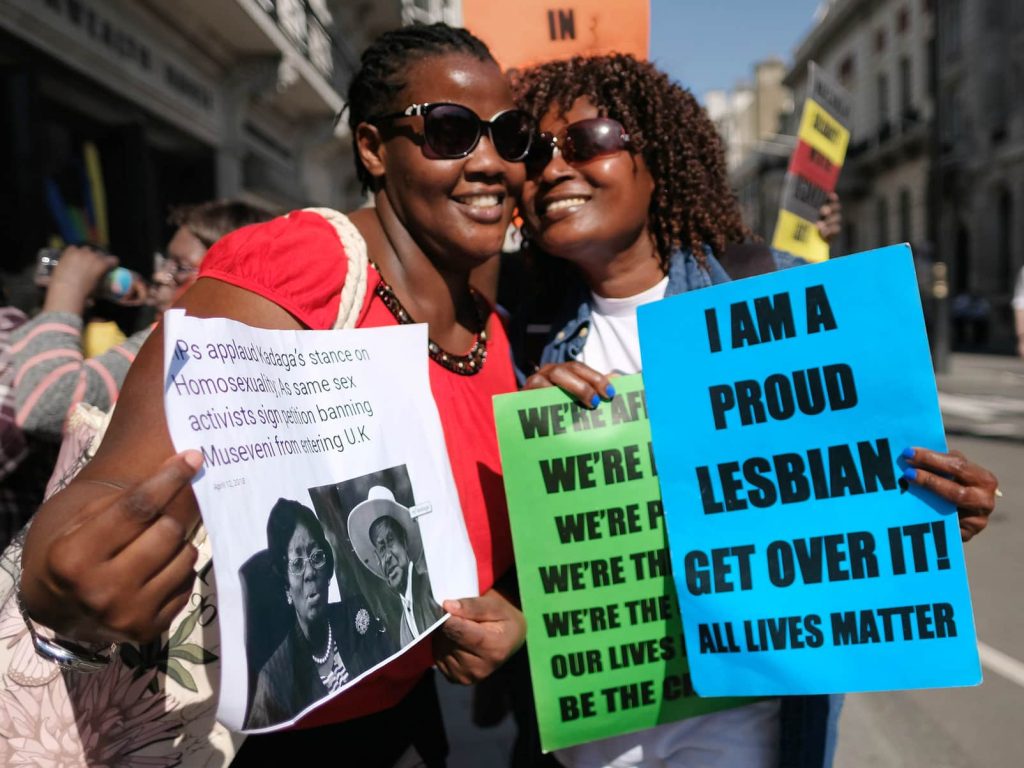
Young women protest against LGBT criminalisation in the Commonwealth, highlighting President Museveni’s role in Uganda’s harsh anti-gay legislation, during the 2018 Commonwealth Conference in London. Photo: Alisdare Hickson/Flickr
Uganda’s Anti-Homosexuality Act not only threatens the LGBTQ+ community but also endangers healthcare and disrupts international aid, creating a nationwide crisis.
The President of Uganda, Yoweri Museveni, has signed an Anti-Homosexuality Act (AHA), outlawing homosexuality in the country. Uganda’s penal code already prohibits same-sex conduct, but the new bill, signed on the 26th of May, introduced the death penalty for acts classified as “aggravated homosexuality”, which includes spreading HIV, rape and serial offending. Moreover, it raised the imprisonment term for same-sex conduct to 10 years, while a 20-year sentence could be handed to anyone promoting homosexuality.
Reviewing the history books reveals this isn’t the first time the government has implemented such measures. The nation has had laws prohibiting anal sex between men, known as “buggery”, since colonial times.
In 2009, under the influence and support of extremist American evangelical Christian groups, Uganda’s government attempted to pass a law penalising various forms of gay sex and activities promoting homosexuality. Although this law failed, a similar one was implemented in 2014, only to be later overturned by the courts due to a technicality. Since then, violence against Uganda’s LGBTQ+ population has escalated.
A report published by Sexual Minorities Uganda indicated an increase in violence against these communities after last year’s Anti-homosexuality law. The violence included attempted lynchings, mob violence, house burnings, job losses, arrests, evictions and suicides.
In some cases, individuals identifying as LGBTQ+ were kidnapped, tortured, and a 17-year-old boy committed suicide, feeling worthless after the law’s enactment. Such Draconian measures affect all Ugandans.
The HIV project in Uganda is also a casualty, with those involved fearing prosecution and seeking treatments underground. Despite the government’s progress in addressing the problem, experts worry that societal stigma towards HIV and homosexuality will discourage people from coming forward.
The law also jeopardises the provider-patient relationship, as healthcare providers are obligated to disclose information about people engaging in gay sex. They could also face revocation of their licences or hefty fines for providing such services.
Lastly, the law could impact the redirection or reinvestment of critical aid. Such aid plays a vital role in developing the healthcare systems and bolstering infrastructure. As of 2021, Uganda received $2.52bn in official net development assistance from various aid organisations. The US, having reported a 4% increase in bilateral flows to Uganda between 2018 and 2020, is the highest donor.
The original bill, which was passed in March 2023, also criminalised individuals merely identifying as LGBTQ+. However, the bill was vetoed by the country’s president, Musevini, and sent back for revisions, which included the removal of this particular point.
“The Western world will not come to rule Uganda”, declared Anita Among, the speaker of parliament. Several local sources and diplomats believe Russian funding facilitated the entire parliamentary motion. Furthermore, American conservative politicians have been fuelling moral panic in societies where homophobia is prevalent.
Uganda is one of 68 countries that have implemented measures to ban homosexuality. The majority of these countries are in the Middle East and North African regions. For members of the LGBTQ+ community, the future appears increasingly bleak. Years of work by activists in Uganda and around the world could be undermined if there are spillover effects to other countries.
However, hope is not lost. Some have filed a petition to challenge the law. “One way or another, we will destroy this bill”, says Clare Byarugaba, an LGBTQ+ activist at Chapter Four Uganda. Many are relying on her efforts to envision a future that now seems like a distant dream.
The Constitutional Court, on the 2nd of October, began proceedings to hear a challenge to the severe Anti-Homosexuality Act. Nicholas Opiyo, a key attorney in this case, emphasised the urgency, noting that many lives hang in the balance pending the outcome.
“Our prayer is that this petition is heard and disposed of as quickly as possible because there are people whose lives are in danger. There are people…whose very life depends on the outcome of this petition,” Opiyo said.
Rethinking Nuclear Deterrence: Geopolitical Bravado or Our Obligation Towards Peace?
By Omar Alansari-Kreger
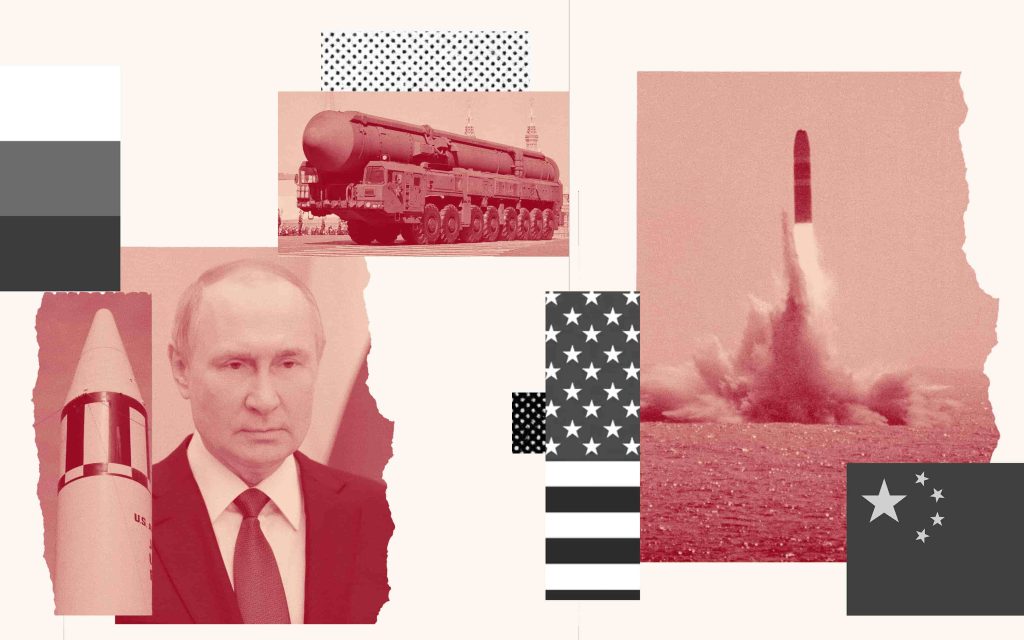
Graphic: Ariana Yekrangi
Might a shift towards proactive anti-nuclear strategies become the key to future global security, given Putin’s revival of Cold War threats?
Every historical curiosity is borne out of a rhetorical question that challenges the accepted narratives of the past. The history we are taught is often presented as simplified stories with humanity at the existential core.
Yet, history is actually moulded by successive generations. With Vladimir Putin ordering Russia’s Strategic Rocket Forces to perform battle readiness drills with live nuclear weapons on Ukraine’s border, the spectre of nuclear war has returned in a starkly real manner.
Indeed, Putin’s aggressive rhetoric — threatening nuclear war — eerily mirrors Nikita Khrushchev’s posture during the Cuban Missile Crisis of 1962. History, it appears, has its echoes.
A sobering consensus emerged among Cold War powers in 1972 when President Carter and General Secretary Brezhnev signed the SALT II Treaty. They realised a chilling truth: if the Cold War were to break into a fully blown war, there would be no victors, only casualties.
This ethos guided Reagan and Gorbachev, encouraging them to uphold the commitments of the SALT II Treaty by demilitarising and decommissioning their respective nuclear arsenals. No geopolitical chest-thumping, disguised as a grand foreign policy, justifies risking human extinction. As a millennial, reflecting on a world sculpted before my birth, I am left wondering: why do nuclear weapons still exist when their endgame is an absolute and zero-sum devastation?
Raising another rhetorical query, one might ask if it’s valid to view Khrushchev and Putin as historical equals. Khrushchev, after all, led a potent, self-assured, and supranational power at a time when Moscow stood for something.
In contrast, Putin’s conflict in Ukraine has not only unveiled the real state of the Russian Federation but also exposed how Russia’s kleptocratic oligarchy now funds geopolitical vanity projects in pursuit of a distorted history. It should hardly surprise us then, to realise that Russia has been deceiving us since Putin took the reins from Boris Yeltsin in 1999.
If “international urban legends” exist, Putin’s Russia could be a prime example. Many anticipated Russia’s military prowess to shine on the battlefield during Moscow’s “special military operation” against Ukraine. The reality of Russian pilots using taped GPS devices in their ageing Cold War-era cockpits would stretch even Tom Clancy’s imaginative limits.
As Putin becomes increasingly desperate, cornered, and isolated, what assurances can the United States offer to the world to demonstrate that Russia can be prevented from initiating nuclear war? Why has our society failed to progress beyond traditional nuclear deterrence principles?
The persistent stockpiling of nuclear ordinances is perilous for citizens hopeful for a future free from nuclear weapons. Instead of developing deadlier and more efficient nuclear devices that can already obliterate our planet several times over, shouldn’t we explore alternatives, such as anti-nuclear weapons, that could prevent nuclear war?
How can we improve our ability to destroy nuclear missiles before they deliver their payloads in outer space, thereby avoiding any fallout on Earth? Could we employ quantum hacking, directed by artificial intelligence, to control hostile launch sites when nuclear weapons become activated?
Why hasn’t the federal government committed to a policy of dismantling and recycling a set number of nuclear weapons each year for the sake of world peace?
World powers like the United States must champion nuclear disarmament, setting the precedent for others to follow. Much like our goals for net-zero carbon emissions, a similar target should be set for achieving net-zero nuclear weapons.
When the idea of a Space Force, first proposed by General Bernard Schriever, was realised under the Trump administration, it was thought that America’s national security interests would be redefined from outer space. But perhaps American security would be better ensured by a Nuclear Arms Reduction Bureau, operating under the Pentagon’s oversight, tasked with curbing nuclear war and proliferation from within the federal government.
Picture a world where future national security objectives include dismantling and demilitarising a specific number of nuclear weapons annually. Is this vision feasible, or simply a fanciful impossibility?
‘Transcending Strokes’: Caravaggio’s Unmistakable Emotion in “Judith and Holofernes” Unveiled’
By Carla Pietrobattista

Caravaggio’s Judith and Holofernes created between 1598 and 1599 on commission from Count Ottavio Costa. Graphic by the UN-aligned design team.
Unveiling the emotional tension in Caravaggio’s ‘Judith and Holofernes,’ a dramatic narrative of good versus evil comes to light through distinctive stylistic elements.
The repetition of distinctive stylistic elements helps art scholars, when necessary, to identify and recognise the authors. In the case of Caravaggio, the most frequent distinctive elements are different: the stroke of the drawing; the choice of the same models for the various characters; the way of interpreting the colours; the contrast between shadow and light…
Yet what in my eyes makes Caravaggio’s hand truly unmistakable, even more than the presence of these objective stylistic elements, is the emotional tension that shines through the faces of the characters who, in most cases, tell us about the eternal conflict between good and evil that has always accompanied man.
This internal battle is the element that shines through in the gestures and faces of the work “Judith and Holofernes” by Caravaggio, also known as Michelangelo Merisi. The canvas was created between 1598 and 1599 on commission from Count Ottavio Costa, Merisi’s patron for a period.
https://un-aligned.org/culture/caravaggio-and-the-unveiling-of-truth/
The theme of the painting certainly does not stand out for its originality compared to what was the artistic panorama of the period. In fact, several artists, before and after Caravaggio, have recounted the deeds of the Jewish widow Judith who, to save her people from foreign domination, did not hesitate to kill the Assyrian leader Holofernes by beheading him while asleep, after having gained his trust.
This canvas depicts the most dramatic moment when the biblical heroine, armed with a scimitar, a weapon chosen by the painter because of its oriental origin, begins to cut off the head of the Assyrian enemy. Beside her, as a witness to the scene, is her servant Abra, ready to collect the sad trophy of the severed head in a basket covered with a cloth, which will then be delivered to the Jewish people.

The triangular arrangement impeccably harmonises the scene, showcasing Holofernes’ effort to brace himself on his arms notwithstanding the force of the blow endured.
The dark background, as in other cases, is used here to underline the drama of the moment. The background shadow is interrupted only by a light source coming from the left. The colours chosen, to contrast with the darker areas, are shiny and animated to enhance the physical as well as the interior characteristics of the three painted figures.
The triangular construction, which perfectly balances the scene, sees a Holofernes able to support himself on his arms despite the power of the blow received. In his eyes you can still read the pain and amazement in front of the strong and decisive gesture inflicted on him by the woman who, thanks to her beauty and the power of her prayers, had deceived him and the Assyrian people.

Judith
In the centre of the painting, Judith, depicted with a white dress and uncovered arms, completes her plan of death and salvation.
The decisive movement of her arms clashes with the expression on her face, which tells us about her contrasting feelings: pride and disgust because she is aware of the strength and consequences of the gesture she first planned and then carried out.

Next to Judith, Abra’s features are very different from those of her mistress; she is old and devoid of beauty. The style of the drawing, the different choice of skin colours, testify not only to the age difference between the two women, but also to the different depth and nobility of their feelings.
The various cloths depicted in the scene, which serve different functions, are so soft and delicate, that they seem real. We see them as Caravaggio saw them, choreographer and set designer of scenes even before embarking on his paintings. The cardinal red drape that overlooks and encloses the action narrated is the same one used later in the painting of the Death of the Virgin, confirming the scenic construction prior to each of the painter’s works.
The Pioneering Spirit of Iranian Women in Modern Pottery - In Pictures
By Anahita Ahmadi and Samira Ghafori

Photo by the UN-aligned design team.
Step into a world where tradition meets innovation in the works of Samira Ghafori and Anahita Ahmadi.
To fully appreciate the artistry presented in this gallery, don’t miss our comprehensive interview with the artists Samira Ghafori and Anahita Ahmadi. Their compelling narratives offer valuable insights that add depth and context to the pieces showcased here.
4 Ways to Use Carbon Dioxide to Curb Global Warming
By Partho Pratim Chatterjee
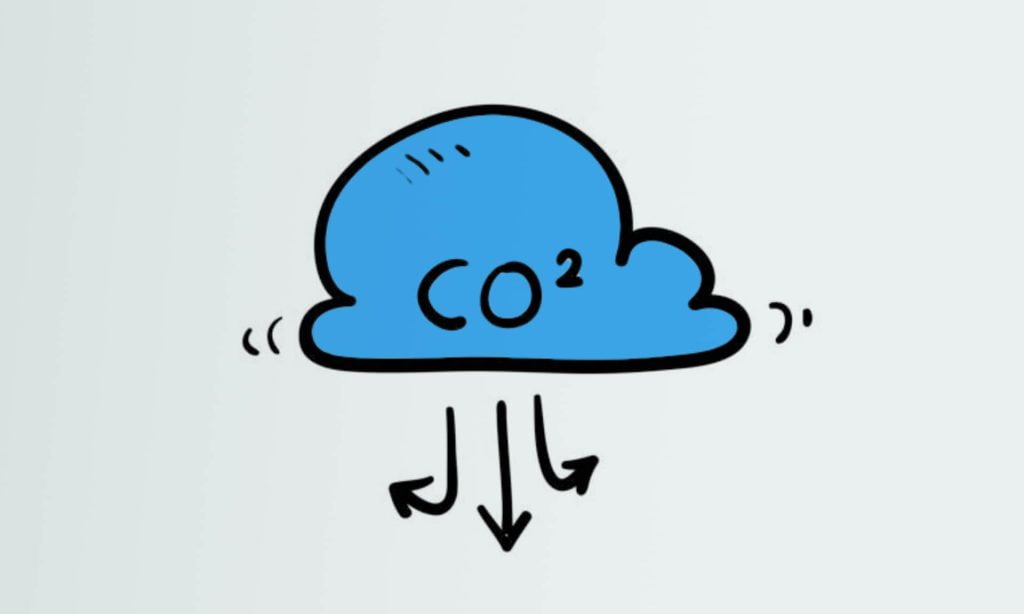
Photo by the UN-aligned design team.
From bioenergy to oil recovery, construction materials to clean fuel… here are four ways to utilise carbon dioxide.
Global warming, a crisis primarily driven by the emission of greenhouse gases such as carbon dioxide, calls for innovative solutions. Our reliance on fossil fuels for electricity generation, transportation, industrial processes and domestic heating has exponentially escalated carbon dioxide levels.
This gas is a significant contributor to the greenhouse effect, which in turn accelerates global warming. But what if we could transform this problem into a solution? Here are four ways we can utilise carbon dioxide to help keep the global temperature rise below 1.5 degrees Celsius by 2100.
1. Harnessing Bioenergy: Nature’s Power Plant
Bioenergy with Carbon Capture and Storage (BECCS) uniquely combines nature’s own carbon capturing agents, plants, with advanced technology to absorb and securely store carbon dioxide. The process begins with growing biomass like forest plantations or energy crops. As they flourish, these plants naturally absorb carbon dioxide from the atmosphere, a process integral to their growth and development.
Once grown, this biomass is harvested and used as fuel to generate energy. The combustion process releases carbon dioxide, which is then captured and securely stored underground, preventing it from contributing further to the greenhouse effect.
In essence, BECCS achieves a double victory. It not only absorbs CO2 but also ensures its long-term storage, making it a truly innovative approach to tackling global warming.
However, large-scale implementation of BECCS could risk competition for land and water resources, which could impact food production and biodiversity. Thus, a balance must be found to optimise the benefits of BECCS while mitigating these risks.
2. Oil Recovery: Breathing New Life into Old Wells
Carbon dioxide can play a beneficial role in enhancing crude oil extraction from ageing oilfields. This method, known as Enhanced Oil Recovery (EOR), involves injecting carbon dioxide into oilfields. The carbon dioxide mixes with the oil, reducing its viscosity and improving its mobility, making it easier to extract.
Once the oil is brought to the surface, it is processed to separate the carbon dioxide. This now-separated carbon dioxide can be sequestered, or stored, preventing it from entering the atmosphere. This process not only enhances oil recovery, but also provides an effective means to capture and store carbon dioxide.
3. Soil Enhancement and Turning Carbon into Building Blocks
The idea of pulling carbon dioxide directly from the air might seem like science fiction, but it’s an active area of research and development. Direct Air Capture (DAC) systems serve this very purpose. The captured carbon dioxide can then be reacted with a lime solution to create calcium carbonate.
Calcium carbonate is more than just a chemical compound. It’s an invaluable tool in agriculture, where it can be used to neutralise acidic soils and provide plants with essential calcium.
Beyond the fields, the wider application of calcium carbonate becomes apparent in the construction industry. The mineralised carbon dioxide in the form of calcium carbonate can serve as a valuable component for construction materials.
Despite its promising application, DAC systems are energy-intensive, still in their early stages of development and, currently, very costly.
4. Methanol: Transforming Carbon into Cleaner Fuel
The transformation of carbon dioxide into methanol presents an innovative way to combat climate change while meeting energy demands.
Carbon dioxide emissions from various sources, such as coal-based power plants and steel plants, are captured and combined with hydrogen to produce methanol. This process notably involves the use of “green” hydrogen, produced from renewable energy sources via water electrolysis, underlining its sustainability.
Methanol production at an industrial scale relies on a technology known as thermal catalytic carbon dioxide hydrogenation. This process yields a fuel that is cleaner and more environmentally friendly than traditional fossil fuels.
Though methanol is less energy-dense than petrol and diesel, its versatility shines in its wide range of applications. From powering vehicles to cooking meals, methanol provides a sustainable alternative to wood, low-grade coal and liquified petroleum gas. This switch could greatly reduce harmful emissions, improving air quality and reducing health risks associated with poor air quality.
We need to do more, and we need to do it faster
The urgency to address the current climate crisis cannot be overstated. If implemented effectively, these strategies could indeed present economically viable, environmentally sustainable, and socially acceptable solutions. However, they are only pieces of a much larger puzzle.
No single technology will suffice in keeping the global temperature rise below 1.5 degrees Celsius by 2100. It will require an amalgamation of these methods, and others not yet discovered, along with substantial reductions in current CO2 emissions. The ticking clock of climate change highlights the necessity of immediate and decisive action.
Transitioning to a carbon-neutral or even a carbon-negative society is not just a desired outcome; it’s an urgent necessity. We need to do more, and we need to do it faster because time is a luxury we no longer have in the fight against global warming.

